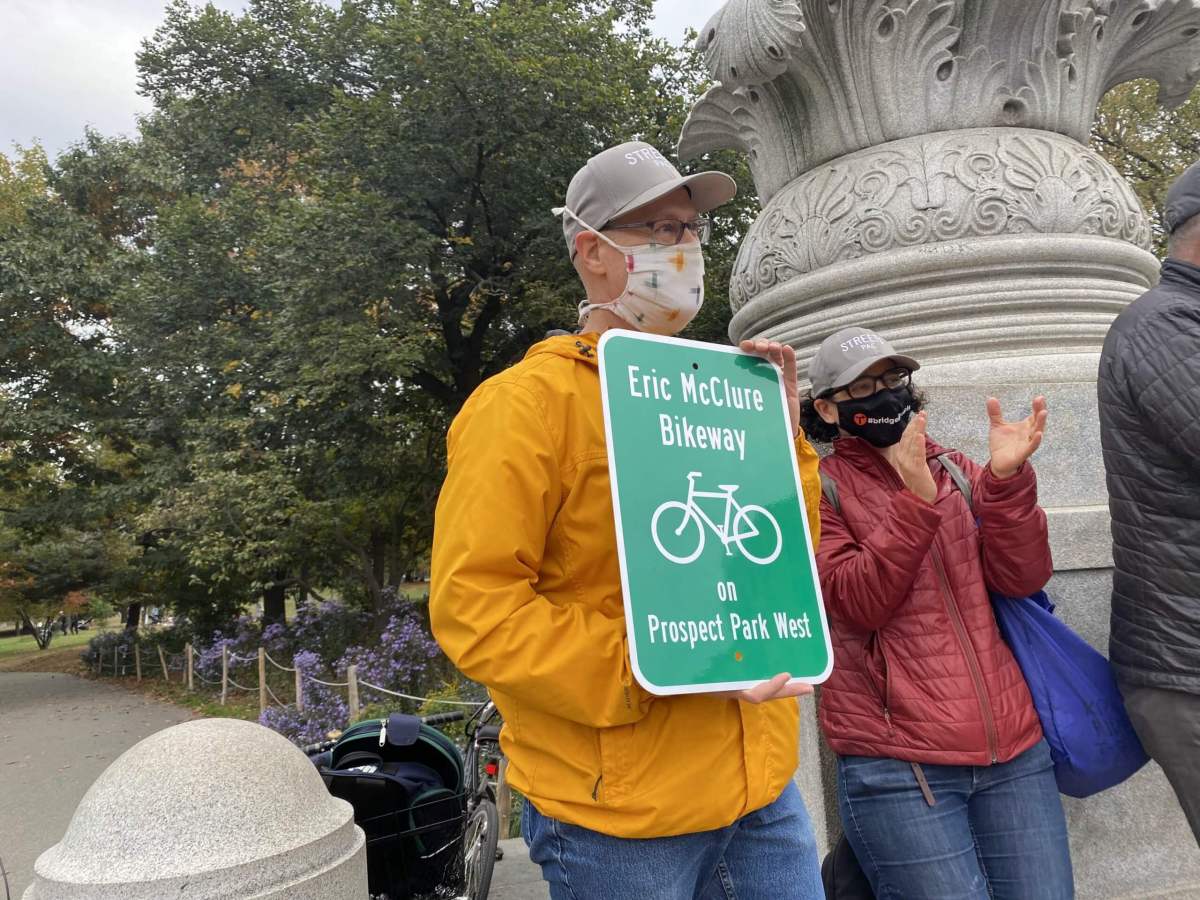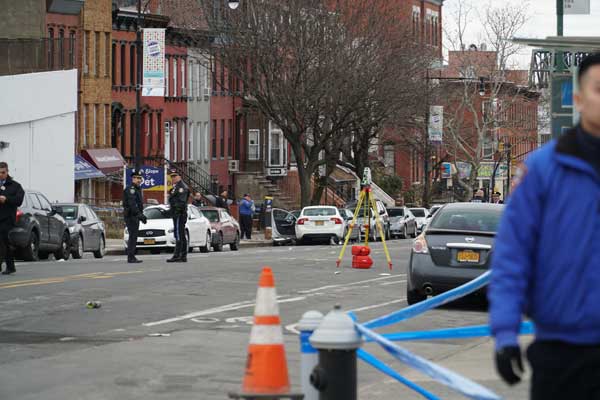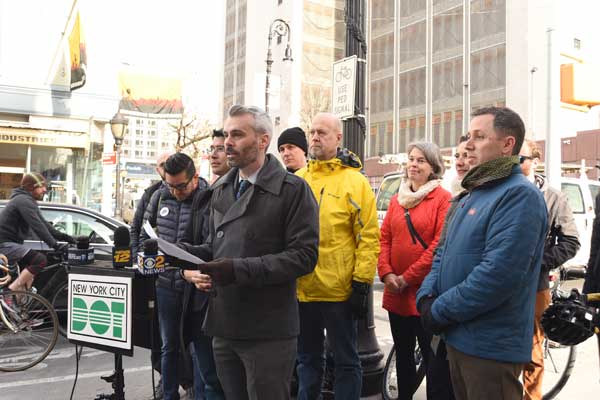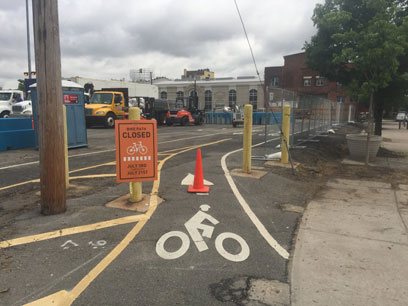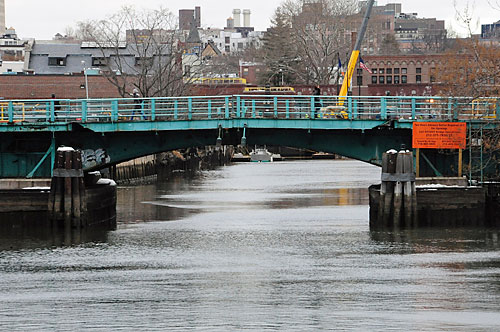Transit advocates gathered to celebrate the 10th anniversary of the Prospect Park West bike lane on Sunday, where the enthusiastic cyclists unofficially co-named the green-painted pedal pushing path after safe-streets activist Eric McClure — whose advocacy made the lane’s construction possible back in 2010.
“It’s amazing, you forget how fraught it was,” McClure said on Sunday. “It was a real knock-down-drag-out battle.”
A year after construction began in 2010, a group of politically connected Park Slopers — including former city Transportation Commissioner Iris Weinshall, the wife of Sen. Chuck Schumer — filed a lawsuit opposing the dedicated cycling path, which kicked off a six year court battle that finally ended when a judge tossed the legal petition in 2017. Since then, the city has slowly moved to wrap the entire exterior of Brooklyn’s Backyard, as well as many major thruways leading to the greenspace, in parking-protected bike paths.
Attendees of Sunday’s event, who capped the celebration with a “family ride” down the lane in support of the project, honored McClure for his relentless activism that helped overcome legal and political challenges to the lane — giving him a DOT-style road sign dubbing the path as “Eric McClure Bikeway on Prospect Park West.”
McClure, along with fellow proponents of transportation alternatives, have lauded construction of bike lanes as safer for both pedalers and cars alike.
According to city data, no bikers were fatally injured along Prospect Park West since the lane’s opening, and motor vehicle speeds have significantly dropped — as an average of 74 percent of cars were recorded speeding along the thruway before construction, compared to just 20 percent one year after.
Park Slope Councilman Brad Lander remarked at the weekend’s unofficial dedication on how much the city’s transit policy had changed since a decade ago, when there were no substantial protected bike lanes — but said the DOT should continue working toward a full citywide network of safe cycling paths.
“Here we are 10 years later, and we still have a long way to go,” said Lander. “We’re seeing the need for bike superhighways, for substantially more bike and pedestrian infrastructure, for a city that can genuinely get people out of their cars onto transit and all types of transportation alternatives.”


